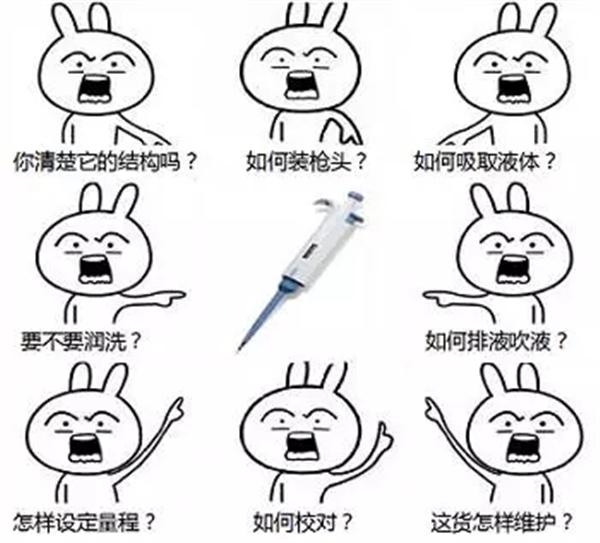As one of the most essential tools in any lab, the pipette is often the star of the show! Whether you're preparing WB samples, making buffers, or handling antibodies, this tiny device plays a huge role. If your research paper could be half as precise as a well-used pipette, it would make a world of difference.

Proper pipette usage is key to accurate results and long-lasting equipment. Here's how to get it right:
Attaching the Tip
Do you ever hear that "clink-clink" sound when attaching the tip? It might seem harmless, but tapping the pipette can damage internal parts like springs or even break the tip sleeve. Instead, gently insert the pipette vertically into the tip and apply slight pressure—about a quarter or half turn. For multi-channel pipettes, align the first tip with the first head and insert at an angle, then shake slightly for a secure fit. Make sure the tip’s logo sits just above the O-ring for a tight seal.
Adjusting Volume
To adjust from a larger to a smaller volume, turn the knob counterclockwise. When increasing from small to large, first rotate the knob clockwise past the desired range (about a third of a turn), then return to your target volume for maximum accuracy. Never push the button beyond the range, as this can jam the internal mechanism and damage the pipette.
High-Precision Rinsing
When working with volatile or organic solvents, pre-wash the tip 4–6 times to prevent negative pressure buildup. This helps avoid leaks and ensures more accurate measurements. Also, avoid using extremely hot or cold liquids, as they can damage the piston. If needed, consider using a piston external pipette instead.
Pipetting Techniques
- Angle: Keep the pipette vertical, no more than 20 degrees. Tilting can cause pressure changes and affect accuracy.
- Immersion Depth: Proper depth reduces liquid pickup errors.
- Aspiration Speed: Move slowly to avoid bubbles and vortex formation. After suction, wait 1–3 seconds on the surface.
- Dispensing: Press the button to the first stop to release the liquid, then press further to the second stop to blow out any remaining drop.
- Storage: Always remove the tip before laying the pipette down—residual liquid can flow back into the body.
Checking for Issues
If your pipette isn’t working smoothly—like if it leaks, doesn’t aspirate properly, or feels sticky—it may need maintenance or calibration. Don’t ignore these signs; they can lead to inaccurate results and wasted time.
Maintenance Tips
- For daily use, clean and calibrate every 3–6 months.
- If not used for a while, set the volume to the maximum to keep the spring relaxed and prevent damage.
- If liquid gets inside, clean it immediately to avoid corrosion.
- Before high-temperature sterilization, check if the pipette can withstand heat to prevent deformation.
- After handling corrosive or volatile substances, disassemble the pipette, rinse the piston rod and white sleeve with distilled water, dry, and reassemble to prevent long-term damage.
Correct pipette use not only improves experimental accuracy but also extends its lifespan. Small details matter a lot in science!

Shanghai Huding Bio-Friendly reminds you: A well-maintained pipette is your best ally in the lab. We offer a wide range of products including ELISA kits, biological reagents, sera, antibodies, and media—perfect for scientific research. All our products are quality-assured and available for inquiry. Contact our sales team today for more information!
Electric Vehicle Air Conditioning Compressor Sealing Terminal
Electric Vehicle Air Conditioning Compressor Sealing Terminal,Gtms Terminal For Car,Ev Compressor Terminal,High Voltage Connector For Electric Compressor
Shenzhen Capitol Micro-Electronics Co.,LTD , https://www.capitolgtms.com